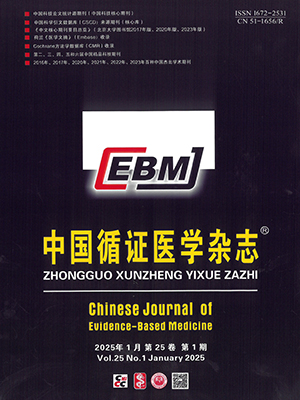| 1. |
胡志东, 王凤霞, 李金, 等. 2010年度卫生部全国细菌耐药监测网报告:伤口感染病原菌分布及耐药监测. 中华医院感染学杂志, 2012, 22(1):23-27.
|
| 2. |
冯平锋, 柴志欣, 裘宇容, 等. 2042株伤口中常见病原菌种类及耐药性分析. 国际检验医学杂志, 2014, 35(6):709-711.
|
| 3. |
缪应业, 谢国旗, 刘新, 等. 2009-2012年伤口分泌物病原菌分布及耐药研究. 中华医院感染学杂志, 2014, 24(3):585-587.
|
| 4. |
瞿亚红, 姜妙静, 周程程. 不同种类标本分离的金黄色葡萄球菌的耐药性比较及分析. 2014年浙江省检验医学学术年会论文汇编, 2014.
|
| 5. |
Lavallée C, Rouleau D, Gaudreau C, et al. Performance of an agar dilution method and a Vitek 2 card for detection of inducible clindamycinresistance in Staphylococcus spp. J Clin Microbiol, 2010, 48(4):1354-1357.
|
| 6. |
刘晓强, 谢晓英, 曾华, 等. 1517株金黄色葡萄球菌的临床分布及药敏结果分析. 中国微生态学杂志, 2014, 26(8):944-946.
|
| 7. |
Cetin ES, Gunes H, Kaya S, et al. Macrolide-lincosamide-streptogramin B resistance phenotypes in clinical staphylococcal isolates. Int J Antimicrob Agents, 2008, 31(4):364-368.
|
| 8. |
明德松, 吴一波, 朱焱, 等. 耐甲氧西林葡萄球菌对大环内酯类抗生素的耐药性分析. 中国现代医学杂志, 2004, 22(11):100-101.
|
| 9. |
张志军, 曹海燕, 刘延媛, 等. 医院感染金黄色葡萄球菌耐药表型与耐药基因研究. 中华医院感染学杂志, 2015, 25(9):1924-1926.
|
| 10. |
Matsuoka M. Study of macrolide, lincosamide, and streptogramin B antibiotics resistance in Staphylococcus aureus. Yakugaku Zasshi, 2000, 120(4):374-386.
|
| 11. |
Uzun B, Güngör S, Pektaş B, et al. Macrolide-lincosamide-streptogramin B (MLSB) resistance phenotypes in clinical Staphylococcus isolates and investigation of telithromycin activity. Mikrobiyol Bul, 2014, 48(3):469-476.
|
| 12. |
叶应妩, 王毓三. 全国临床检验操作规程. 第3版. 南京:东南大学出版社, 2006:502-509.
|
| 13. |
National Committee for Clinical Laboratory Standards. Performance standards for antimicrobial disk susceptibility tests. M100-S15, NCCLS, 2005:1-133.
|
| 14. |
Clinical and Laboratory Standards Institute. Performance standards for antimicrobial susceptibility testing; Twentieth informational supplement. CLSI documents M100-S20. CLSI, 2010.
|
| 15. |
陈惠刚, 林艳, 李晰, 等. 河北地区皮肤病住院患者金黄色葡萄球菌耐药基因检测. 中国病原生物学杂志, 2015, 10(1):29-33.
|
| 16. |
张志军, 曹海燕, 刘延媛, 等. 医院感染金黄色葡萄球菌耐药表型与耐药基因研究. 中华医院感染学杂志, 2015, 25(9):1924-1926.
|




